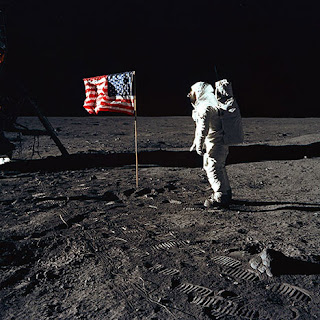American ingenuity has raged this the past century like Genghis Khan through technological obstacles.
What was science fiction just decades ago can now be held in the palm of a hand or the top of a pinhead. While perhaps the greatest leap for mankind took place at 3:17 p.m. Eastern time on July 20, 1969, when the Apollo 11 lunar module the Eagle landed on the moon, the next may be just aound the corner.
"Nothing can astound an American," wrote Jules Verne prophetically in "From the Earth to the Moon" in 1865. "In America, all is easy, all is simple; and as for mechanical difficulties, they are overcome before they arise. ... A thing with them (Yankees) is no sooner said than done."
Likewise, entrepreneurs in this country have scored success after success. Note iPad sales.
OK. How about figuring out a way to make clean energy the dominant form of electricity production?
It can't be too soon.
A study led by West Virginia University researcher Dr. Michael Hendryx found cancer rates twice as high in a community exposed to mountaintop removal mining as compared with an unexposed town, said Jeff Biggers, a journalist and author, in a piece for Huffington Post. The study links the strip mining method to 60,000 additional cancer cases.
And the production of carbon and air pollution by burning fossil fuels appears destined to ignite a climate disaster that will flummox even the most jaded naysayer.
So we need a plan. Blogger Michael Graham Richard, like me, fixated on the space race of the 1960s, in which the United States pummeled the USSR's efforts, for a model to follow.
"Like in the 1960s, we'll need an inspiring vision to rally our efforts, we'll need to take existing technologies and rapidly push them to the next level, as well as invent new ones," writes Richard in a post on treehugger.com. "But most importantly, we'll need focus; to keep doing the hard work and sacrifices until we reach our goals."
Verne wrote his novel about space travel before any real work on the practical mathematics of such trajectories had been formulated. Yet, his rough calculations and ideas proved remarkably accurate
I use the book in this analogy primarily because I just read the above passage and was impressed, proud even. "Heck yes, that's the spirit," I thought. Mind you, this is my fifth Verne book after plowing through "A Journey to the Center of the Earth" and "The Mysterious Island," and I'm starting to think like a long-dead translated French author.
Verne's hero in the novel is Impey Barbicane, an industrialist sidelined by the halt of the Civil War. Barbicane's comments at the start of the book made me realize I'm reading something akin to anti-war satire.
"My brave, colleagues, too long already a paralyzing peace has plunged the members of the Gun Club in deplorable inactivity," Barbicane says.
Let's apply that to current day geopolitics. Perhaps stopping all wars, official and unofficial, will give the nation's military industrial complex the incentive to pursue -- like the members of Barbicane's fictional Gun Club -- alternatives like clean energy.
President Dwight D. Eisenhower said in his famous 1961 speech that "we must guard against the acquisition of unwarranted influence, whether sought or unsought, by the military-industrial complex."
But he also said its "total influence -- economic, political, even spiritual -- is felt in every city, every state house, every office of the federal government." That power, harnessed for clean energy profits, could be world-changing.
In the meantime, smaller businesses are doing quite well on their own.
Michael Kanellos of greentechmedia.com reports that First Solar has developed a cadmium telluride solar cell returning a record 17.3 percent efficiency. The breakthrough beats the old record of 16.7 percent set by the National Renewable Energy Laboratory a decade ago.
And Timon Singh of inhabitat.com reports that start-up Semprius has unveiled a solar cell half the size of a pinhead, which when combined with powerful but inexpensive lenses can concentrate sunlight more than 11,000 times and convert it to electricity.
Other breakthroughs and cost reductions are happening throughout the solar industry, bringing us closer to the day when solar will compete head to head, without subsidies, with fossil fuels.
For now, we wait. And I'll be discovering just how protagonist Barbicane reaches the moon.
Photo: Astronaut Buzz Aldrin takes his steps for mankind.

No comments:
Post a Comment